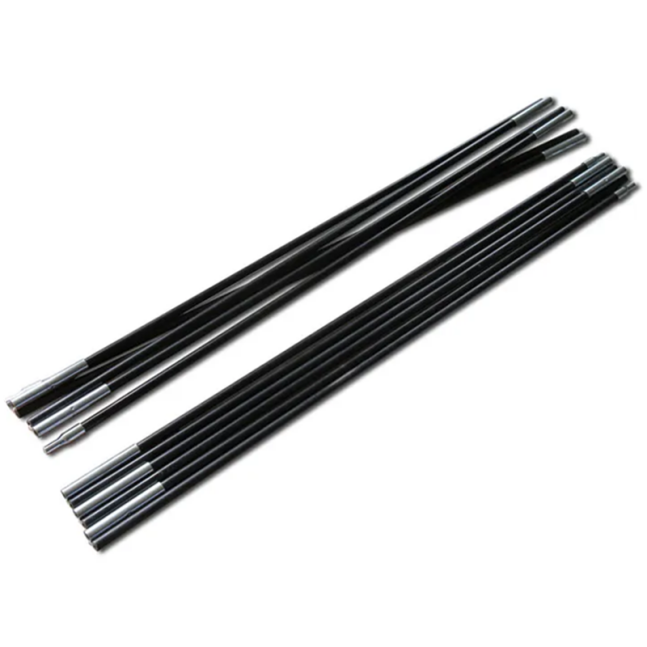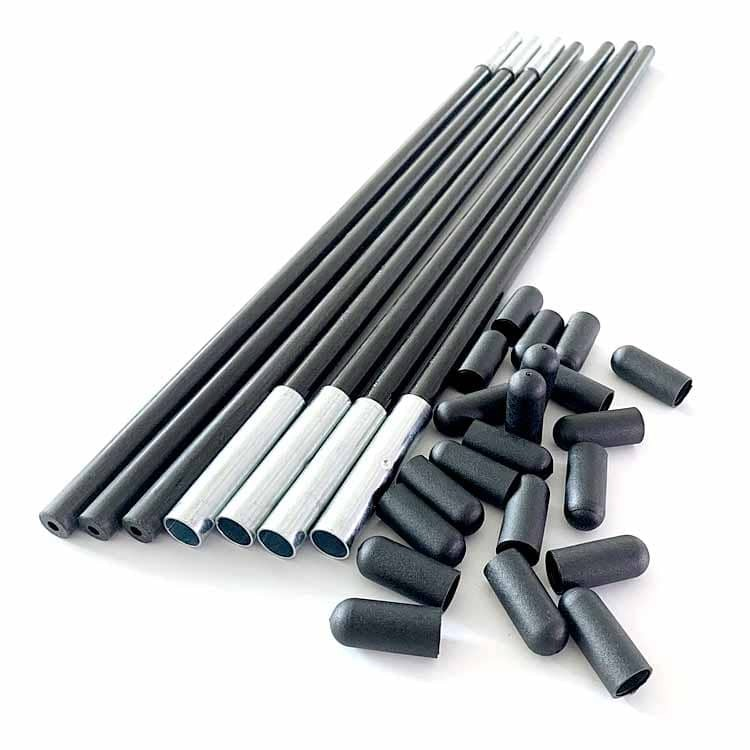How to Choose the Right Fiberglass Tent Poles for Your Tent
When it involves inhabitancy gear, fiberglass tent poles play an important role in ensuring stability, durability, and simple setup. Among the assorted materials out there, fiberglass tent poles are a well-liked selection thanks to their flexibility, affordability, and resistance to corrosion. However, not all fiberglass poles are identical, and choosing the correct ones can make a significant difference in your occupancy experience.


Whether or not you are substitution a broken pole or upgrading your setup, this text can assist you in building an enlightened call.
1. Understanding Fiberglass Tent Poles: Why Choose Them?
Fiberglass tent poles are widely used in camping gear because they offer several advantages:
Lightweight yet strong – Easier to carry than aluminum but still durable.
Flexible and shock-absorbent – Less likely to snap under pressure compared to carbon fiber.
Affordable – More budget-friendly than high-end aluminum or carbon fiber poles.
Weather-resistant – Unlike steel, they don’t rust, making them ideal for wet conditions.
However, fiberglass poles can break under extreme stress, so choosing the right ones for your needs is essential.
2. Key Factors to Consider When Choosing Fiberglass Tent Poles
A. Pole Diameter and Thickness
The thickness of a fiberglass tent pole affects its strength. Most tent poles range from 8mm to 11mm in diameter.
Thicker poles (9-11mm) – Better for larger tents, high winds, or heavy rain.
Thinner poles (8-9mm) – Lighter and more flexible, ideal for backpacking tents.
Check your tent’s manual or measure the existing poles to ensure the right fit.
B. Pole Length and Segment Size
Fiberglass poles come in collapsible segments connected by elastic cords.
Shorter segments (e.g., 12-14 inches) – More compact for storage but may have more weak points.
Longer segments (e.g., 18-22 inches) – Fewer connections, reducing breakage risk.
Ensure the total length matches your tent’s requirements—too short, and the tent won’t set up properly; too long, and it may not fit.
C. Flexibility vs. Stiffness
Fiberglass tent poles are naturally flexible, but some are reinforced for extra stiffness:
More flexible poles – Better for dome tents that need to bend into shape.
Stiffer poles – Ideal for cabin-style tents requiring rigid support.
Test the pole’s bend before purchasing—excessive flex can lead to instability in strong winds.
D. Weight Considerations
While fiberglass is lighter than aluminum, some poles are reinforced with extra layers, adding weight.
Ultralight backpackers – Opt for thinner, lighter poles (8-9mm).
Car campers – Can choose slightly heavier poles (10-11mm) for added durability.

E. Compatibility with Your Tent
Not all fiberglass tent poles work with every tent. Check:
Pole sleeve or clip system – Some tents use sleeves (requiring smooth poles), while others use clips (needing notches).
End fittings – Ensure the pole tips fit securely into your tent’s grommets or attachment points.
If replacing a broken pole, try to match the original manufacturer’s specs for the best fit.
3. Where to Buy Quality Fiberglass Tent Poles
You can purchase fiberglass tent poles from:
Outdoor retailers (REI, Cabela’s, Bass Pro Shops)
Online marketplaces (Amazon, eBay, specialized camping stores)
Direct from tent manufacturers (Coleman, Kelty, MSR)
Look for customer reviews and warranty options to ensure durability.
4. Maintenance Tips to Extend the Life of Your Fiberglass Tent Poles
To prevent breakage and prolong their lifespan:
✔ Store properly – Keep them dry and avoid extreme temperatures.
✔ Avoid forcing bends – Gentle handling prevents stress cracks.
✔ Inspect regularly – Check for splinters or weak spots before trips.
✔ Use a pole repair sleeve – For minor cracks, a splint can reinforce damaged sections.

5. Frequently Asked Questions (FAQs)
Q: Can I replace aluminum tent poles with fiberglass?
A: Yes, but ensure the flexibility and diameter match—fiberglass bends more, which may affect tent stability.
Q: How do I know if my fiberglass pole is broken?
A: Look for visible cracks, splintering, or a weak bend. A broken pole may still hold but could fail under pressure.
Q: Are fiberglass tent poles safe in high winds?
A: They perform well in moderate winds but may flex excessively in storms. For extreme weather, consider reinforced aluminum poles.
Conclusion: Choosing the Best Fiberglass Tent Poles
Selecting the right fiberglass tent poles involves balancing strength, flexibility, weight, and compatibility with your tent. By considering diameter, length, and intended use, you can ensure a stable and reliable shelter for your camping adventures.
Whether you're a backpacker needing lightweight poles or a family camper prioritizing durability, fiberglass remains a versatile and cost-effective choice.

